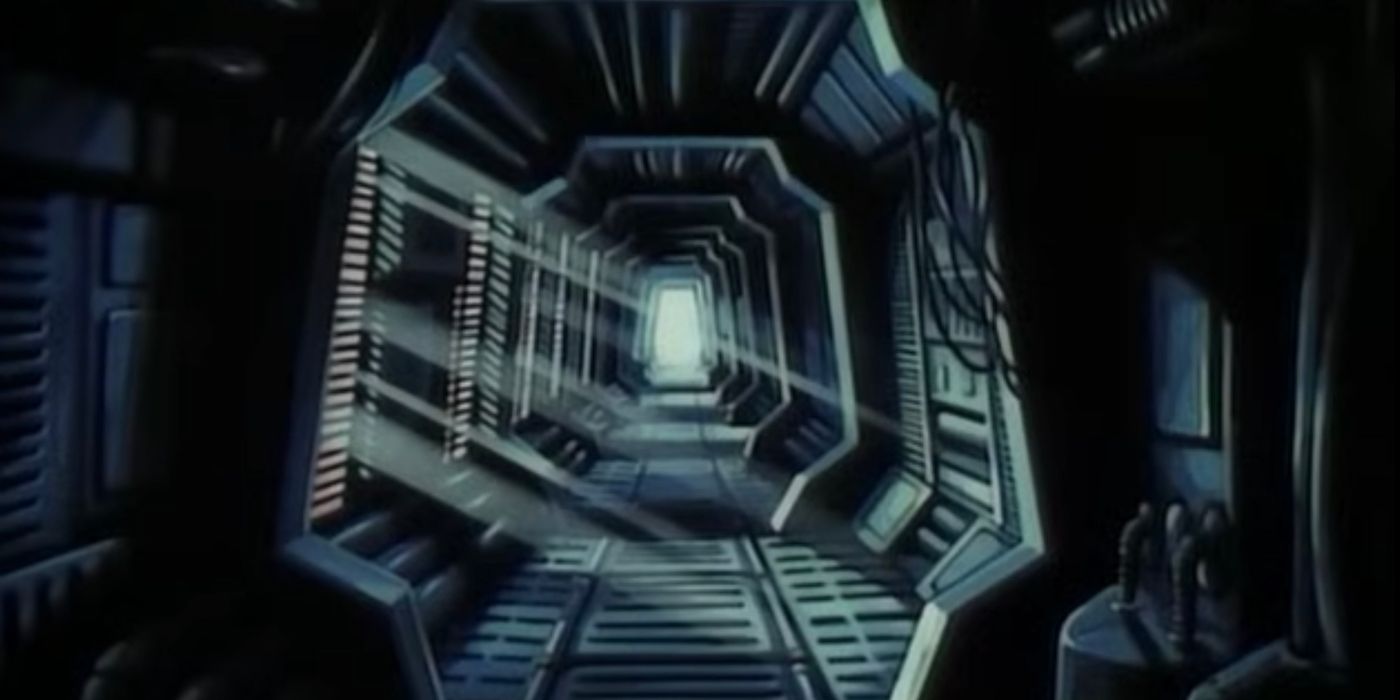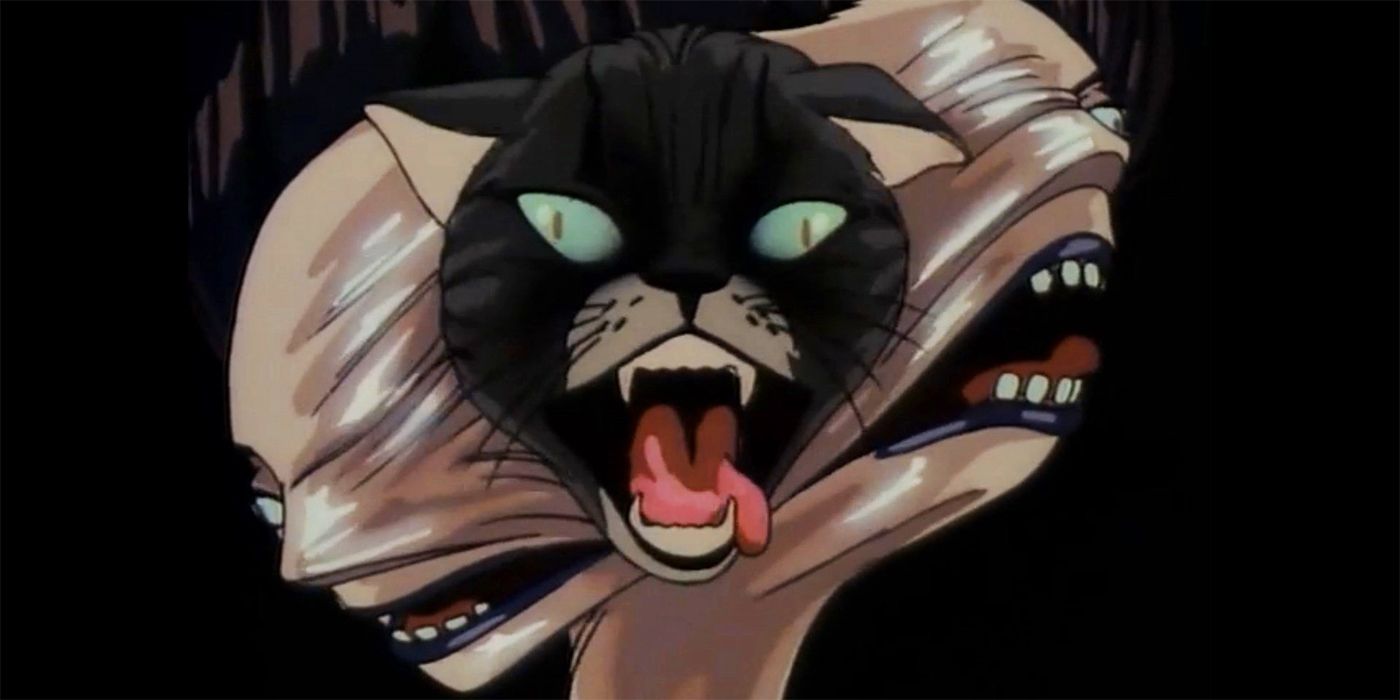
This ‘80s Horror Anime Is a Must-See For Fans of ‘Alien’ and ‘The Thing’
A crew of space miners awakens from a 20-year sleep (having only aged one year) to confront an eerie presence that turns into a menacing creature that kills off each person, one by one until the remaining survivors are forced to defend themselves with flame throwers and opening air locks to eject the monster. No, it’s not an abbreviated description of Ridley Scott‘s 1979 film Alien. Is it a mistranslation of the new Alien: Romulus film? Not that either, but it may as well be placed somewhere in that same universe because, in 1987, Hisayuki Toriumi directed a film that bore a striking resemblance to Scott’s masterpiece. While taking liberally from John Carpenter‘s The Thing, the horror anime movie, Lily C.A.T., is perfect for someone who loves creepy alien horror movies set in outer space. With its attention to industrial spaceship design detail, inclusion of gruff and headstrong characters, a mysterious conglomerate corporation with questionable motives, the inclusion of a cat as a major plot point, and the ominous atmosphere of long, dark corridors inhabited by creeping monsters – Toriumi’s film is so influenced by Alien that it should be placed in the franchise canon.
The Influence of ‘Alien’ Is Felt in the Visuals of ‘Lily C.A.T.’
One look at Toriumi’s film and the similarities between Scott’s space horror picture and this anime becomes obvious. From a pure design perspective, the film feels like an animated version of Alien; the steely design of the ship, cool colors, sleep pods, and graphics used in the computer communications (the ship’s computer, incidentally, is also referred to as “mother” just as in Alien). This visual homage in its design doesn’t work against the film; on the contrary, it makes the film even more enjoyable. It’s familiar without being fraudulent, with a story that’s unique enough to fit both into horror and science fiction. This familiarity acts as a visual and narrative shorthand, as well. If the audience recognizes a certain setting based on previous movies (an industrial spaceship on a mission), then it’s easier to approach this movie and settle into the atmosphere without being too jarring. The setting is immediately comfortable so the story can begin without too much interference or resettling.
‘Lily C.A.T.’ Has the Same Paranoid Atmosphere as ‘The Thing’
The atmosphere of Lily C.A.T. is also similar to The Thing. When the crew wakes up from their 20-year cryo-hybernation, they replay a video message that was received some years ago from a suit at the Syncam Corporation (the corporation funding this expedition). The message says that two people on board aren’t who they say they are, they’re impostors who’ve snuck onto the ship with false identities. Just when the video message is going to reveal who the people are (their names and pictures), the video is scrambled and cut off. The crew posits that the only reason someone would come aboard a ship like this, and go on a mission as long as what they’ve experienced, is that the person is a “time jumper.” By the crew’s definition, time jumpers are criminals who go on 20 or 30-year trips to avoid sentencing back on Earth. It’s easier to outlive the prosecutors if you jump to a time when everyone has forgotten the crimes committed, easier to start from scratch. So now the crew is on edge. They know there are two people aboard who are impostors and most likely criminals… but who? That atmosphere of paranoia, mistrust, and mystery, becomes pervasive in the already creepy setting of a dark, steely, moody spaceship.
Just as in Carpenter’s claustrophobic, paranoid thriller, this space-bound movie becomes a mystery to solve who the impostor is among the people on the ship. Once people suddenly start dying, however, their lungs infected with an alien bacteria, the tone of the movie doubles in strain. Now that everyone is a suspect, with their lives being scrutinized to invasive degrees to weed out the least obvious, the quest to solve the mystery of the rampant, killing virus comes to the fore. On top of all that, the bodies of the dead start to disappear, leaving only their clothes behind, and the race to point fingers, judge, and accuse becomes more heated. Similarly to The Thing, once it becomes obvious to the audience that the people disappearing aren’t being murdered by the “time jumper” but by a mysterious creature, the movie veers genres from mystery to horror.
Science Fiction and Horror Are Two Genres That Go Perfectly Together
Alien and the sequels that followed have always mixed horror and sci-fi to perfection. The original film is a slasher movie set in space, and every subsequent entry afterward tinkered with and re-shaped the genres. It could be argued that any movie set in outer space is science fiction, and to add the element of another genre simply expands the palette of the story. However, there are few rom-coms in outer space; one or two psychedelic fantasies, for sure, but horror seems to always be the go-to genre to pair with sci-fi. One of the earliest horror-sci-fi
films whose influence can be seen in Alien is Mario Bava‘s delectably dark Planet of the Vampires. There are also obvious notes of H.P. Lovecraft in Ridley Scott’s masterpiece. This mixture of genres is so prevalent for its use of the unknown and the inherent fear humans have of the infinite unknowable corners of the universe. Lily C.A.T. plays into those fears of the unknown, both of the human and alien kind.
What is this organism that is killing and absorbing the humans on this ship? Where does it come from? All the movie tells us about the creature is that it starts as a bacteria in the lungs before becoming an enormous tentacled monster (not unlike the mutated alien in The Thing, absorbing as many people as it can until it can form fully into the monster it needs to be. Its origin appears at the beginning of the movie, as an inert, living body in the shape of a meteor which the ship picks up and throws into its air ducts to dissolve and become absorbed into the air filtration system. How did the ship know to pick this up? It’s never fully explained, and that randomness of the alien’s appearance plays into the unknowable fear of the vastness of outer space just like the terror the crew of the Nostromo feels against the ambiguous nature of the xenomorph, and the inherent fear each crew member in the Antarctic science lab feels against the shape-shifting monster in John Carpenter’s claustrophobic masterpiece.
From its design to the eerie atmosphere, Lilly C.A.T. borrows from Alien and The Thing in ways that pay respect and move forward the genre of science fiction horror. One could see this being part of a double feature connecting Alien and The Thing or becoming a template for future Alien movies within the franchise, reminding the audience that sometimes we don’t need everything explained to be scared, we just need to be creatively, cleverly freaked out by some terrific, horrific thrills in outer space.
Lily C.A.T. is available to stream on the Roku Channel in the U.S.





